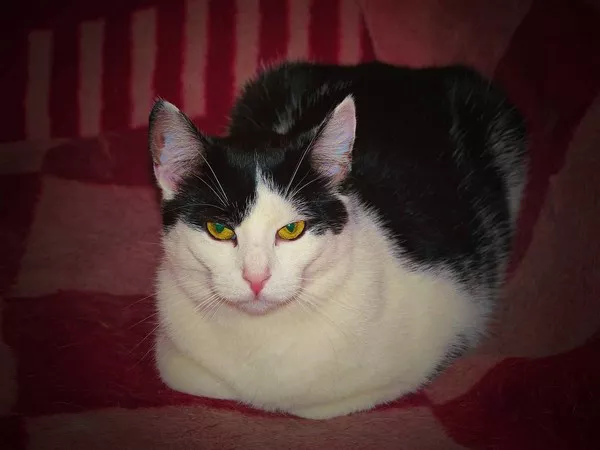The allure of a long-haired calico cat is undeniable. The combination of striking colors and luxurious fur often leaves cat owners curious about the specific breed of their feline companion. While calico is a distinctive coat pattern, determining the underlying breed can be a complex task. In this comprehensive article, we will explore the intricate world of long-haired calico cats, shedding light on the factors that contribute to their unique appearance and helping you uncover the secrets behind your feline friend’s lineage.
Understanding Calico Cats
Before delving into the intricacies of breed identification, it’s crucial to comprehend the calico coat pattern. Calico refers to a tricolor coat characterized by a mix of white, black, and orange (or its diluted version, cream). This distinctive patchwork pattern is primarily a result of the interaction between coat color genes, specifically those responsible for determining black and orange pigments in a cat’s fur.
See Also:Why Are Calico Cats So Mean?
The Genetic Tapestry: Unraveling Calico Colors
Calico cats are almost exclusively female, and the intricate genetics behind their coat colors are fascinating. The gene responsible for orange or black coloration, located on the X chromosome, plays a pivotal role. Female cats have two X chromosomes (XX), while males have one X and one Y chromosome (XY). In female cats, one X chromosome may carry the orange gene, and the other may carry the black gene. The random inactivation of one X chromosome in each cell results in the distinctive patchwork pattern seen in calico cats.
Understanding the genetics behind calico coats is essential in the journey to uncovering your cat’s breed. While the calico pattern is distinctive, it does not provide information about the underlying breed or breeds that contribute to your cat’s genetic makeup.
Identifying Breeds in Long-Haired Calico Cats
Long-haired calico cats, with their majestic fur and vibrant colors, can belong to various breeds. The challenge lies in distinguishing the breed-specific traits beneath the captivating coat. Below are some prominent long-haired cat breeds that frequently exhibit the calico pattern.
Persian Cats: Elegance in Every Strand
Persian cats are renowned for their luxurious, long fur and distinctive flat-faced appearance. These regal felines often come in a variety of colors and patterns, including calico. The Persian breed contributes a graceful demeanor and a flowing coat to the genetic makeup of long-haired calico cats.
To identify Persian traits, observe your cat’s facial structure, which may include a flat face and a short nose. Additionally, Persian cats are known for their calm and gentle temperament, making them wonderful companions.
Maine Coon Cats: Majestic and Multicolored
Maine Coon cats, one of the largest domestic cat breeds, are characterized by their tufted ears, bushy tails, and tufted paws. While commonly associated with tabby patterns, calico Maine Coons exist and showcase the breed’s diversity in coat colors and patterns.
To recognize Maine Coon traits, consider your cat’s size, tufted ears, and long, bushy tail. Maine Coons are also known for their friendly and sociable nature, contributing to their popularity as family pets.
Norwegian Forest Cats: Nature’s Artistry in Fur
Norwegian Forest Cats, with their robust build and thick, water-resistant fur, have an ancestral connection to the cold climates of Norway. These majestic cats may exhibit the calico pattern, adding a touch of nature’s artistry to their already captivating appearance.
To identify Norwegian Forest Cat traits, look for a muscular build, tufted ears, and a thick, bushy tail. Their semi-long fur often features a dense undercoat, contributing to their adaptability to colder environments.
Ragdoll Cats: Calm and Colorful Companions
Ragdoll cats are known for their docile temperament and striking blue eyes. While they are often associated with colorpoint patterns, calico Ragdolls exist and bring a gentle and affectionate demeanor to the mix.
To recognize Ragdoll traits, observe your cat’s large, expressive blue eyes, semi-long fur, and colorpoint markings on the face, ears, paws, and tail. Ragdolls are famously known for their tendency to go limp when held, contributing to their unique name.
Turkish Angora Cats: Graceful and Glorious
Turkish Angora cats are characterized by their silky, semi-long fur, bushy tails, and distinctive pointed ears. These graceful felines may showcase the calico pattern, adding a touch of glory to their already elegant appearance.
To identify Turkish Angora traits, observe the silky texture of the fur, the plume-like tail, and the characteristic pointed ears. Turkish Angoras are known for their playful and affectionate nature, making them delightful companions.
Conclusion
In the captivating world of long-haired calico cats, unraveling the mystery of their breed adds an extra layer of fascination for cat enthusiasts. While the calico coat pattern is a result of intricate genetics, the underlying breed traits contribute to the overall charm and personality of these majestic felines.
As you embark on the journey of identifying your long-haired calico cat‘s breed, consider the distinctive features associated with breeds such as Persian, Maine Coon, Norwegian Forest Cat, Ragdoll, and Turkish Angora. Paying attention to your cat’s size, fur texture, facial structure, and temperament will guide you towards unraveling the genetic tapestry that makes your feline friend truly unique.
In the end, regardless of the specific breed, the bond you share with your long-haired calico cat is what truly matters. Their enchanting colors and charming personalities make them cherished companions, and the joy they bring into your life is a testament to the beauty and diversity found within the feline world.
Related Topics:
Why Are Calico Cats So Strange?
Why Calico Cats Are the Coolest?
Decoding Why Calico Cats Talk So Much
























